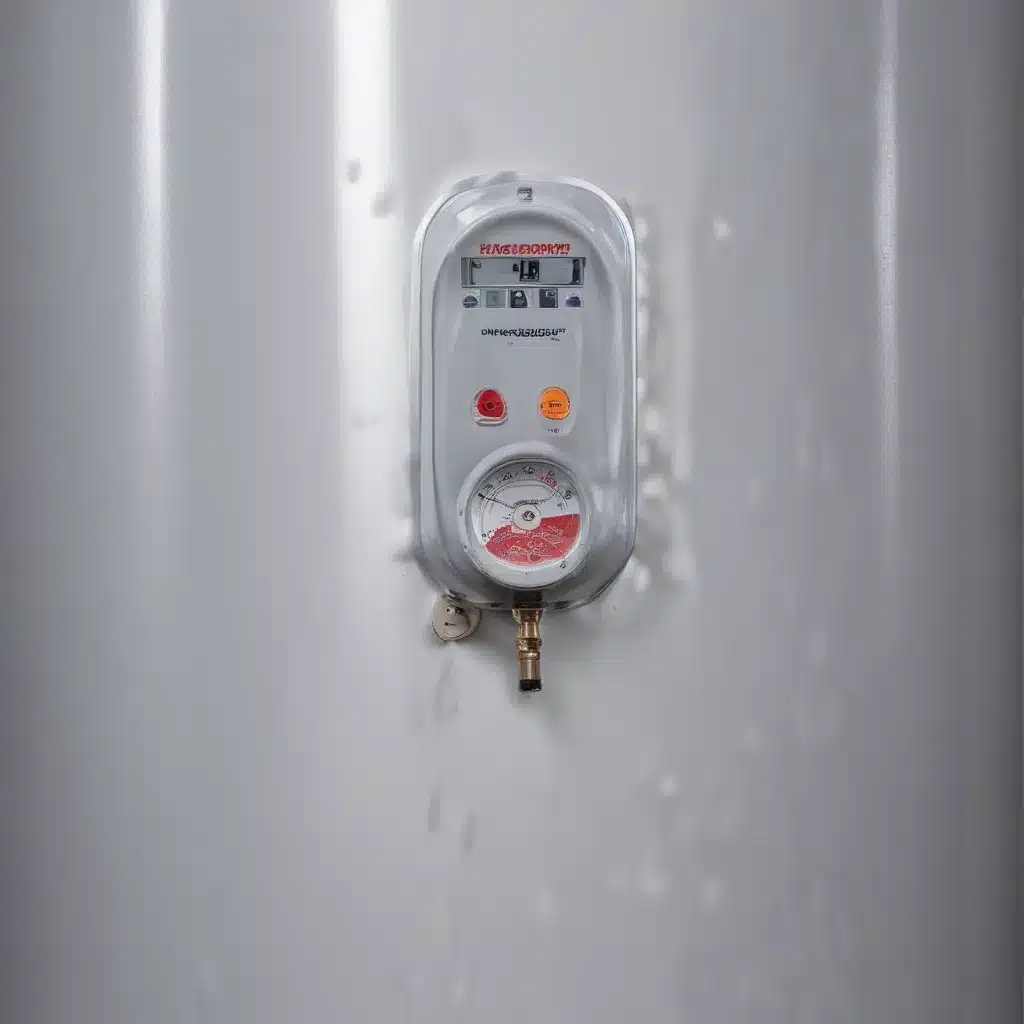
As an experienced water heater specialist, I’ve seen firsthand the consequences of uncontrolled thermal expansion in tank-style water heaters. In our 10 years of water heater experience… This phenomenon, where heated water expands and increases pressure within the plumbing system, can wreak havoc if left unchecked. From leaks and bursts to accelerated component wear, the risks are significant. In this comprehensive guide, we’ll explore the causes of thermal expansion, its effects, and the strategies you can employ to effectively mitigate the damage.
Now, this might seem counterintuitive when dealing with water heaters…
Understanding Thermal Expansion in Water Heaters
When water is heated, its molecules begin to move faster, causing the overall volume to expand. This is a fundamental principle known as thermal expansion. In a tank-style water heater, as the water is heated, it occupies more space, leading to a rise in internal pressure.
Causes of Thermal Expansion
There are several factors that can contribute to increased thermal expansion in a water heater system:
Elevated Water Temperatures: The higher the temperature of the water, the greater the degree of expansion. Many water heaters are set to temperatures around 125-145°F, which can lead to significant pressure increases.
Closed-Loop Plumbing Systems: If the home’s plumbing system is equipped with a check valve or pressure regulator, it creates a “closed-loop” scenario. This traps the expanding water within the system, causing pressure to build up.
Faulty or Missing Expansion Tanks: An expansion tank is designed to absorb the excess pressure caused by thermal expansion. If the tank is malfunctioning or absent, the pressure has nowhere to go.
Effects of Thermal Expansion
The consequences of uncontrolled thermal expansion in a water heater can be quite severe:
Leaks and Bursts: The increased pressure can cause damage to the water heater tank, fittings, and other plumbing components, leading to leaks or even catastrophic bursts.
Accelerated Component Wear: Constant pressure fluctuations put stress on valves, seals, and other sensitive parts, reducing their lifespan and increasing the risk of failure.
Water Hammer Effect: Sudden changes in water flow caused by thermal expansion can create a “water hammer” effect, leading to loud banging noises and potential pipe damage.
Damage to Appliances: High water pressure can impact the performance and lifespan of water-reliant appliances like washing machines, dishwashers, and ice makers.
Strategies for Mitigating Thermal Expansion Damage
To effectively manage the risks of thermal expansion in your tank-style water heater, consider implementing the following strategies:
Proper Expansion Tank Installation
The most crucial step in preventing thermal expansion damage is to double-check that a properly sized and installed expansion tank. These tanks are designed to absorb the excess pressure, allowing the system to maintain safe operating levels. Be sure to follow the manufacturer’s specifications for tank size and pre-charge pressure.
Regular Maintenance and Inspection
Routinely inspecting your water heater and plumbing system can help identify potential issues before they become problematic. This includes:
Checking for Leaks: Carefully inspect the tank, fittings, and connections for any signs of water leakage, which could indicate pressure-related problems.
Flushing the Tank: Removing sediment buildup from the bottom of the tank can improve efficiency and reduce the risk of overheating.
Replacing Anode Rods: These sacrificial rods protect the tank’s interior from corrosion; replacing them every 5 years can extend the heater’s lifespan.
Proper Plumbing Techniques
The materials and installation methods used in your home’s plumbing system can also play a role in managing thermal expansion. Consider the following:
Pipe Material Selection: Choosing the right pipe material, such as copper or PEX, can better withstand the pressure fluctuations caused by thermal expansion.
Insulation: Proper insulation of pipes and fittings helps maintain a more consistent water temperature, reducing the degree of expansion.
Expansion Tank Placement: Positioning the expansion tank as close to the water heater as possible can improve its effectiveness in absorbing pressure changes.
Regulations and Codes
When it comes to water heaters and plumbing systems, it’s essential to be aware of the relevant local codes and regulations. Many jurisdictions now require the installation of expansion tanks, pressure-reducing valves, or other safety devices to mitigate the risks of thermal expansion.
Be sure to familiarize yourself with the applicable codes in your area and consult with a licensed plumber to double-check that your water heater setup is compliant and up to par.
Troubleshooting Common Issues
Even with the proper preventative measures in place, issues can still arise. Here are some common problems to watch out for and how to address them:
Pressure Relief Valve Problems: If the pressure relief valve is malfunctioning, it may not be able to effectively release excess pressure, leading to potential leaks or bursts. Regularly test the valve and replace it if necessary.
Sediment Buildup: Over time, mineral deposits can accumulate at the bottom of the tank, insulating the water and causing it to overheat. Flushing the tank on a regular basis can help prevent this.
Thermostat Malfunctions: If the water heater’s thermostat is not functioning correctly, it may not be able to maintain the desired temperature, leading to pressure fluctuations. Verify the thermostat’s operation and replace it if needed.
Upgrades and Replacements
As technology continues to advance, there may be opportunities to improve the efficiency and performance of your tank-style water heater. Consider the following upgrades:
Efficiency Improvements: Replacing an older, less-efficient water heater with a high-efficiency model can reduce energy consumption and the associated thermal expansion risks.
Tankless Conversions: Transitioning from a traditional tank-style heater to a tankless system can eliminate the thermal expansion issues altogether, as tankless heaters only heat water on demand.
Heat Pump Retrofits: Upgrading to a heat pump water heater can provide significant energy savings while still maintaining the benefits of a tank-style system.
By staying informed and proactive, you can effectively mitigate the risks of thermal expansion in your tank-style water heater and enjoy a reliable, safe, and efficient hot water system. For more information and resources, be sure to visit WaterHeaterPick.com.
Tip: Use insulation blankets to improve energy efficiency

